Torres del Paine’s Unridden Singletrack
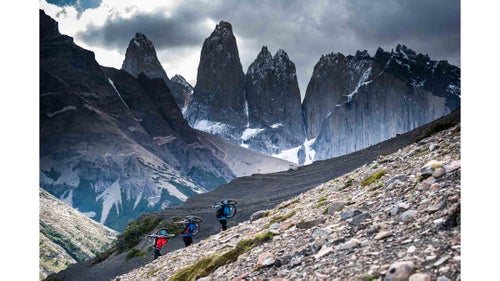
Twenty-odd years ago I spent a year cycling around Chile, including a couple of weeks on the dirt roads of Torres del Paine National Park. In February of this year, I returned to this windswept corner of Patagonia with news that mountain bike access to the park's hallowed trails had been negotiated by local Punta Arenas-based guide Javier Aguilar.
I was accompanied by riders Rene Wildhaber, Matt Hunter, and H+I ���ϳԹ���s’ Euan Wilson for a reconnaissance trip. We joined Aguilar to explore the potential of Torres del Paine’s often steep, but always spectacular singletrack, and to see if it has the potential to draw mountain bikers as it has hikers for decades.
Photo: Topping out at 9,350 feet, the three granite Torres (left to right: Sur, Central, and Norte) are the park’s namesake and make a spectacular backdrop for our hike up the 5,600-foot high Cerro Paine. While many of the park’s trails offer buff, flowing singletrack, others—like the trail to Cerro Paine’s peak—demand commitment and energy reserves to summit, not to mention courage to descend.
Photos and words by Dan Milner.

Our rides traversed open alpine mountainsides and ducked through dense birch and lenga, a native tree to the region. Rain can fall on any day of the year here, making the forests of Torres del Paine rich and verdant. For us, these forests offered a peaceful and welcome break from the almost incessant winds that blow across the region in summer.
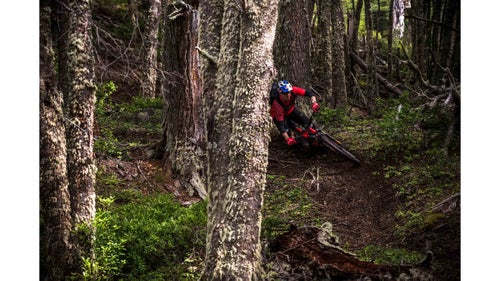
During our ride towards Lago Paine, Wildhaber enjoyed some quiet time on a trail that has seen few, if any, mountain bike tires. Negotiating access with estancia owners in the park has enabled Aguilar to guide on trails that cut across their land right in the heart of the park, as well as on the six permitted trails administered by the National Forest Corporation (CONAF).

Hunter and Wildhaber ride alongside the Rio Paine. With annual visitor numbers recorded at 250,000 and rising, it’s natural to think that solitude would be hard to find in the park. But the reality is that the majority of hikers focus on the classic five-day “W” trek, leaving many other trails, including sections of the nine-day Paine Circuit loop (pictured) eerily quiet. With serious pressure being put on the park’s hotspots, administrators in CONAF are discussing whether to limit visitor numbers to 300,000 per year.

Hunter exchanged notes with a cycle tourist, the only other cyclist we saw in five days. Given its challenging weather, Torres del Paine is perhaps the most improbable place to want to ride bikes, but still we went. Its gravel roads have long lured two-wheeled tourists, often passing through at the start or end of a Pan-American highway epic. Avoiding gravel roads, we discovered six different trails to ride, each worthy of a whole day’s outing.
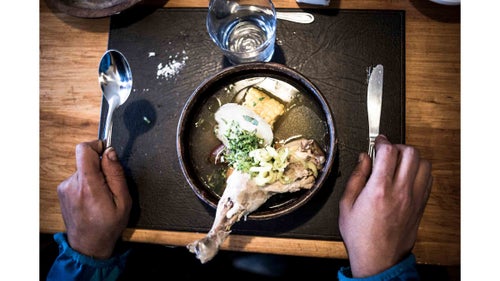
The wild grasslands that surround Torres del Paine are used largely for sheep and cattle farming. While fresh mutton was a mealtime staple during our stay, our refuge’s menu boasted wholesome vegan alternatives too, giving a nod to the increasing dietary preferences of today’s park visitor.

The chance to experience four seasons in one day is well documented here. Combined with the drama of sheer mountains rising abruptly from rolling grasslands, the Torres del Paine experience has made it a mecca for hikers. Now that it’s included on an H+I itinerary, only time will tell how many more mountain bikers come to experience this enigma themselves.
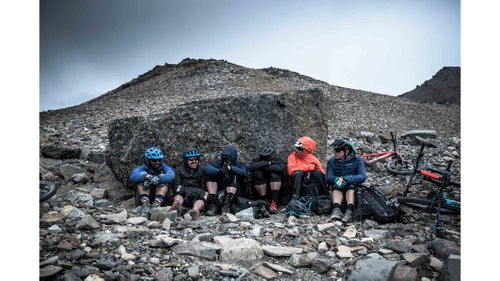
Our second attempt to summit Cerro Paine was defeated by gusts so strong they made it impossible to carry our bikes up the steep scree trail. Forced to shelter from horizontally blown hail, we were reminded that an appetite for adventure is essential to enjoy mountain biking here. The very next day we woke to clear skies, sunshine, and a windless mountain.

Hunter watches as mist envelopes the majestic Torres. Visiting the park has almost become a rite of passage for many foreign trekkers, as many tour operators have sold surviving its changeable, inclement weather as an attraction to be experienced.
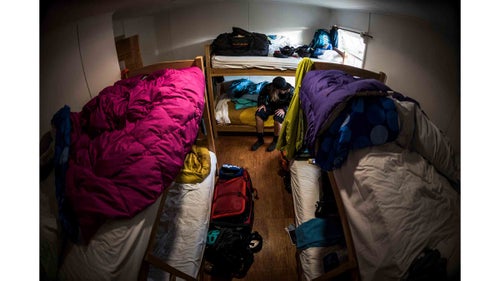
We stayed in the privately owned Refugio Torre Norte, one of the few budget accommodation options reachable by vehicle. High demand for beds, especially December through February, has fueled price rises over the years, and a bed in a six-bunk room at this simple hut now costs $66 per night. As the park’s popularity grows, increasing prices may make the park less attractive to the budget traveler, but there is no shortage of people willing to pay to sleep in the heart of such a glorious landscape.